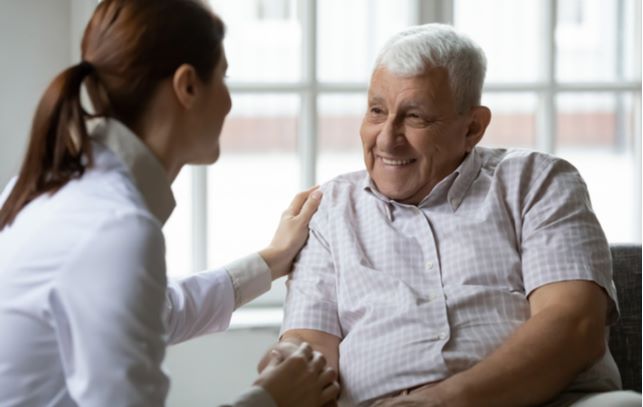Aging is as natural and as beautiful as anything else in our lives. Still, caregiver vacations, surgeries, and mounting homecare responsibilities can make it challenging to keep up with your loved one’s needs, even if it’s just for a short period.
Respite care provides your loved ones with support until their primary caregiver can shoulder their responsibilities once again. But how long can your loved one enjoy our respite care services? And is it possible to transfer from being in respite care to one of our permanent lifestyle options?
Today, we’re going to take a look at how respite care can support you and your family. If you have any questions about customizing our services to meet specific needs, please feel free to contact us or schedule a tour through our community.
No matter what your family’s needs may be, we’re here to help.
What Is Respite Care?
Respite care is a short-term service we offer at All American Senior Living at Washington Township.
What makes respite care a fantastic choice for many is how long they can choose to be in our charge. For a minimum of 30 days, respite care residents receive comprehensive, customizable support and get full access to our community’s list of amenities and programs. Our staff carefully considers our resident’s needs to ensure the transition into respite care is comfortable and convenient.
We can offer respite care for as long as it’s needed. Whether it’s to help your loved one recover from surgery, give a caregiver a much-needed break, or to try out our services before moving in permanently, our services are always available.
Respite Care or Permanent Senior Living?
While respite care is a great option to have, there may be a time when a permanent residency might be a better fit for your loved one. Every situation is different, but permanent care might be best for your loved one if:
- The primary caregiver’s well being is declining.
- Your loved one runs the risk of injuring themselves.
- Your loved one needs regular professional care.
- Your family can’t support your loved one or the caregiver.
Please have an honest discussion with your family before choosing a permanent senior living residency. If you wish, we’d be happy to walk you through some of the ways we can support your loved one and help you make an informed decision.
If you’re unsure about a permanent residency, respite care can give your loved one an opportunity to try out our services before deciding to move in.
Types of Respite Care
Residential Care
In residential respite care, your loved one will get access to professional staff and medical personnel while living in a cozy, customizable suite suited to their needs.
Residential care is simple, convenient, and comfortable for every resident that chooses it.
In-Home Care
In-home care is a professional service some agencies can provide to help take care of a loved one while living in their own home. You and your loved one can pick which days would be best for an in-home caregiver to visit, and caregivers can even provide more advanced care depending on their certification and medical training.
Adult Day Care
Many family caregivers also have to work to provide for their loved ones, but seniors may find being home all day isolating and lonely. Adult day cares are a great way to help your loved one connect with others while giving them the daily care they need.
Adult day cares can provide meals, snacks, events, outings, and more!

Respite Care: Not Just For Your Loved One
There are several reasons why you or your loved one might take an interest in respite care, but one of the most common reasons we offer this lifestyle is to prevent caregiver burnout.
According to research, there are over 40 million unpaid primary caregivers in the United States. Caregiving can look like a lot of things, including personal care, housework, and financial support, but keeping up with these responsibilities can take its toll on a caregiver’s mental and physical wellbeing (which can be especially true for caregivers between the ages of 45 and 64—about 23% of unpaid caregivers).
About 40% of caregivers experience emotional stress from their responsibilities, while 20% report physical strains. If a caregiver gives in to burnout, they can develop symptoms like:
- Anxiety
- Depression
- Body aches and pains
- Exhaustion
- Fluctuating appetite
- Insomnia
- Weakened immune system
Respite care gives your loved one’s primary caregiver time to rest and recharge before returning to their duties. Taking care of your loved one is our utmost concern, and we’re proud to offer services that lessen the strain caregiving can put on families and their loved ones.
If respite care seems like an appropriate answer to your concerns, please consider contacting us to learn more about how we can help.


